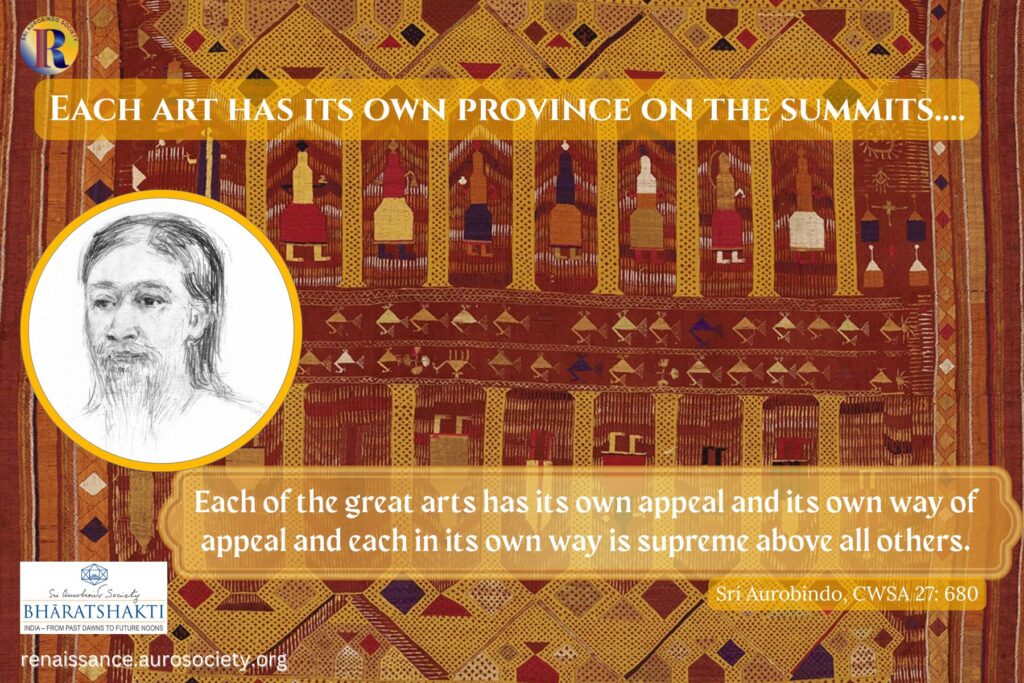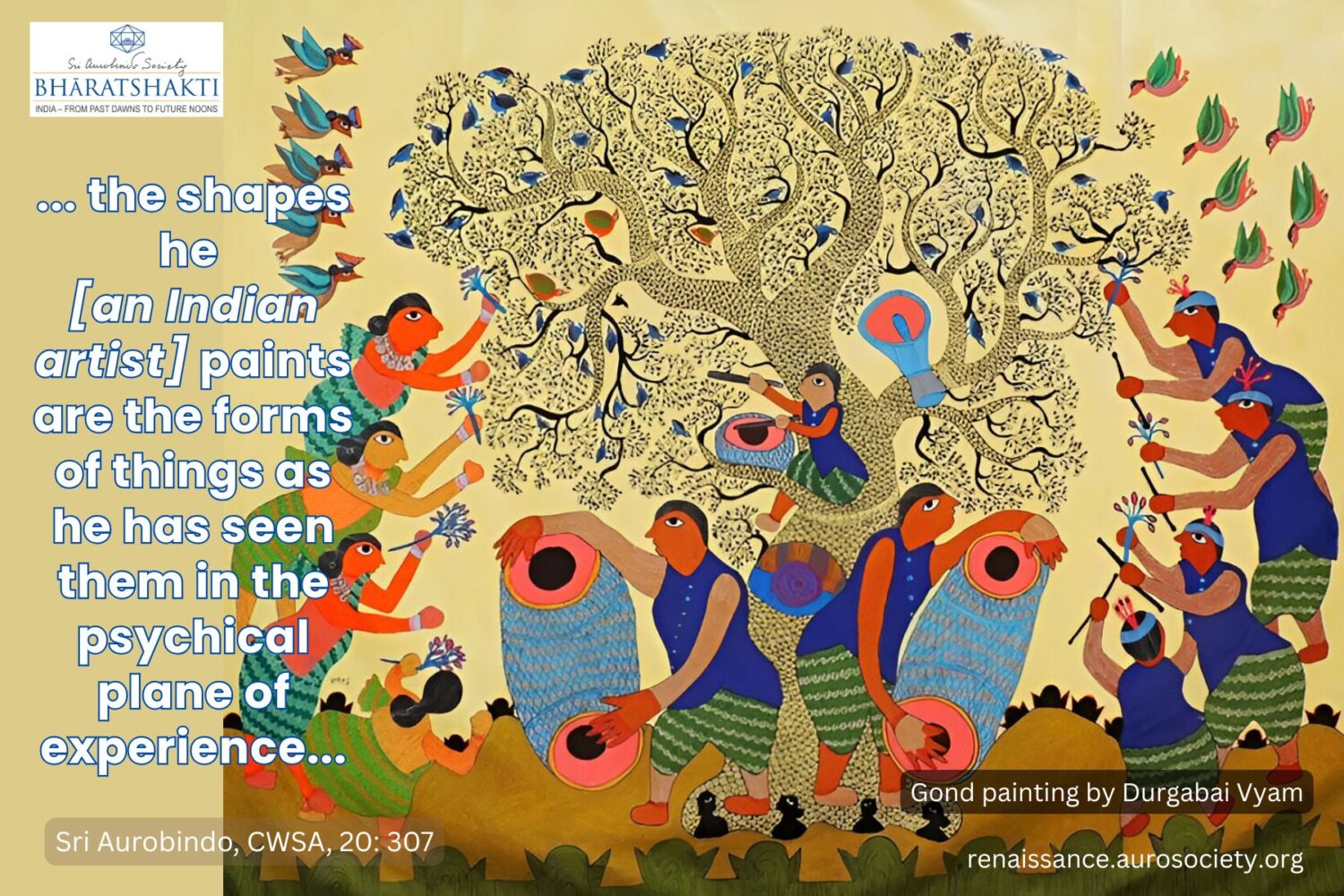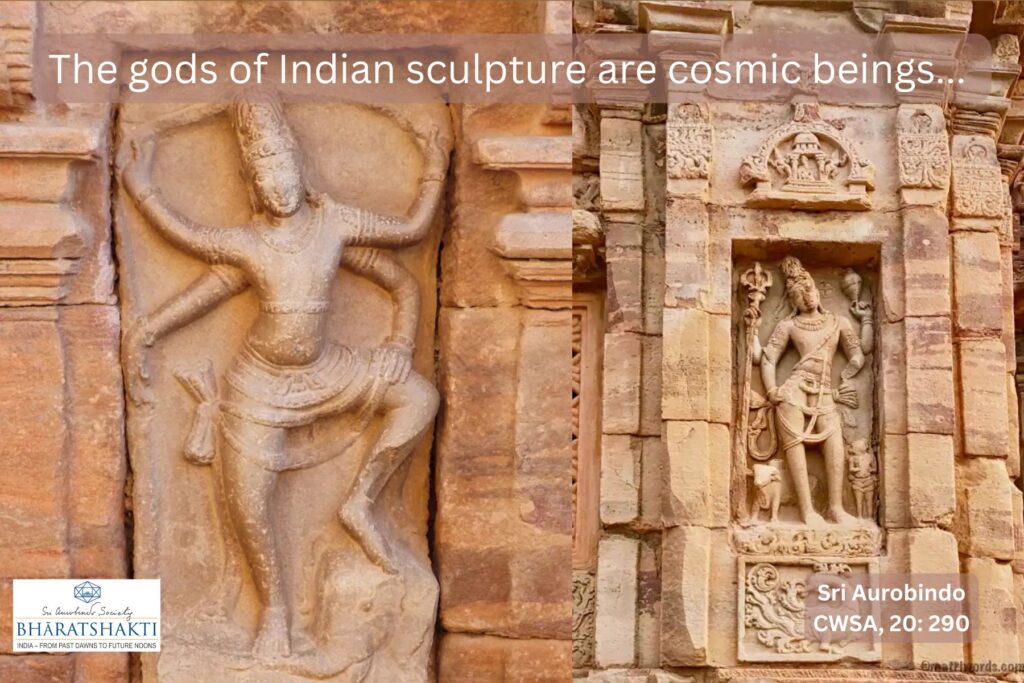Greetings for Vijayadashmi, 2023!
On this auspicious day of Dussehra or Vijayadashami, we release a special issue of Renaissance celebrating Divine Shakti. As the whole world celebrated the festival of Navaratri, the nine nights of the Devi, our worship of the Divine Shakti took many forms including researching and working on this special issue, facilitating a 4-day intense workshop for children on related theme, and more.
Invoking the Divine Mother who is the Source of all our work as well as the ever-present Force and Guidance behind it all, we invite our readers to browse through this specially curated issue on the theme of Divine Shakti.
***
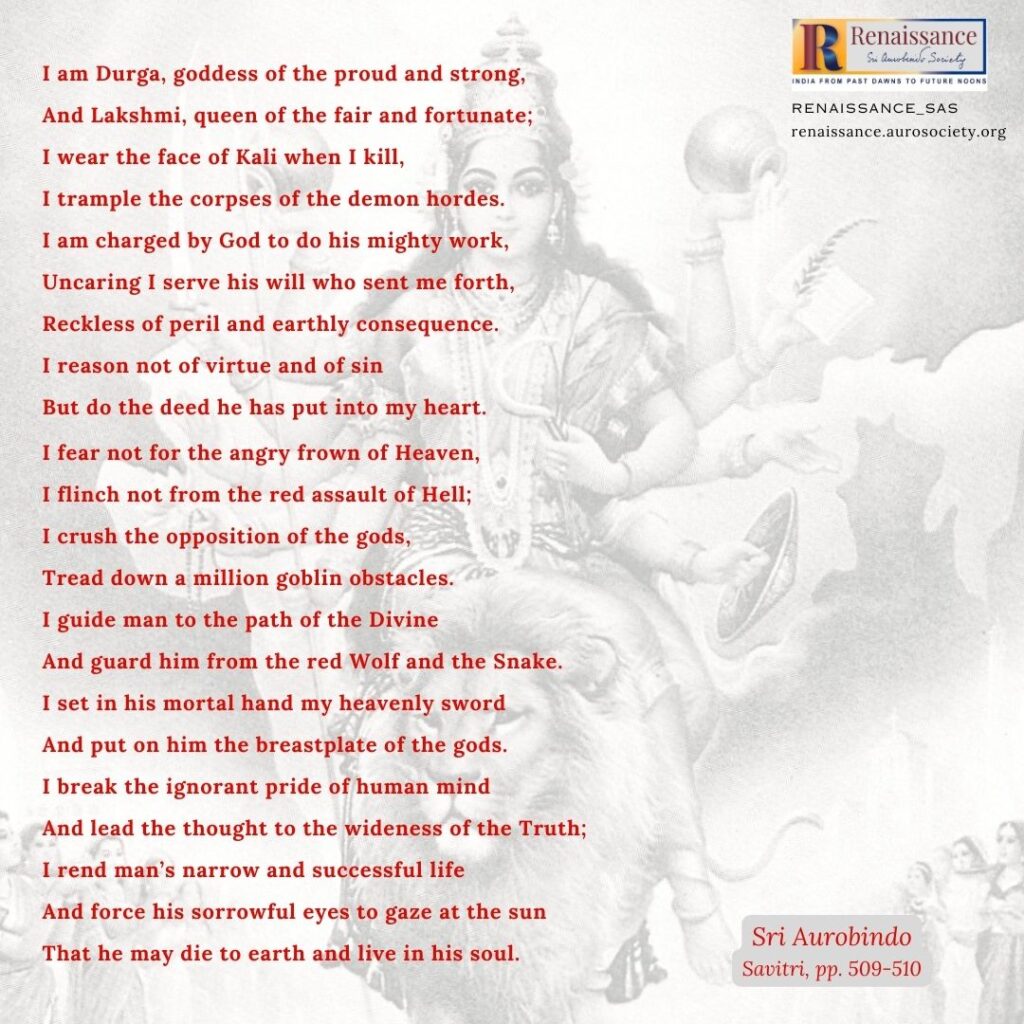
The Spiritual History of India
In an essay titled March of Civilisations, Nolini Kanta Gupta (Collected Works, Vol. 1, pp. 205-218) speaks of the natural division of spiritual history of India into great movements with their corresponding epochs. Each of these epochs has dwelt upon and dealt with one domain in the hierarchy of man’s consciousness. He lists these epochs as: (l) Vedic, (2) Upanishadic, (3) the Age of Darshanas, (4) Pauranic, (5) the Age of Bhakti, and finally (6) the Tantric.
He cautions that we should not misunderstand that the last – the Tantric stage – is the latest revelation, or one that is nearest to us in time. It has been there all along, but “it represents a kind of complementary movement,” one “in which the others find their fruition and consummation.” (p. 215)
What was revealed to the Rishis of the Veda through their Occult Vision and Will, came to the Upanishadic Rishis through the force of Intuition. With the growth of a philosophical outlook as rational understanding and discursive argumentation became dominant mode of conveying the truth, it gave rise to the Age of the Darshanas or Systems of Philosophy – starting with the Buddha and reaching its peak in Shankaracharya.
Next was the Puranic stage, “when the vital being of man was touched by the light of the spirit and principally on the highest, the mental level of that domain” (p. 216).
Here the element of feeling and emotion and imagination starts to become a leading note in man’s spiritual quest. This becomes more concrete and more vibrant and intense in the next stage, the age of Bhakti, when the whole emotional being is taken up.
What remains is the physical, the most material layer to be worked upon and made conscious and illumined. This is the work to be taken up by the Tantric discipline which bases itself upon “Nature Power coiled up in Matter: the release of that all-conquering force through a purification and opening into the consciousness of the Divine Mother, the transcendent creatrix of the universe.” (p. 216)
***
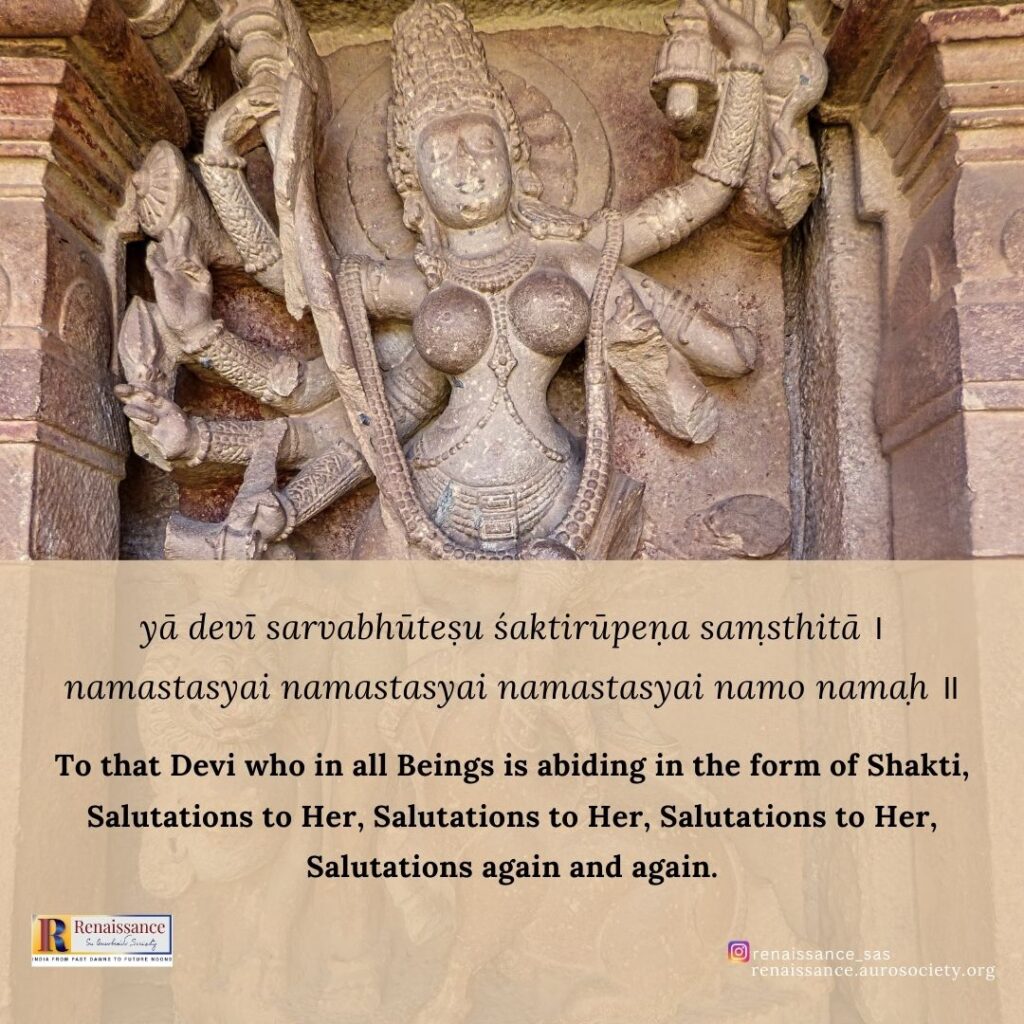
***
Thus, the true march of India has been an intense inner and a spiritual movement. It has been dealing with man’s very nature, and sought to know it from within and shape it consciously. This is how we must understand the true inner history of India, the spiritual movement that has shaped Indian culture, thought and life. This understanding will awaken us to the future march of India as a nation-soul.
Tantra and Integral Yoga
Tantric discipline, it is understood, concerns itself with illumining the very physical layer, the material nature of consciousness. The Vedic-Vedantic line of realization speaks of the Oneness of Existence, and the One Brahman, the Purusha, the Eternal Being who inhabits, rules and transcends this entire Manifestation. Tantra as a complementary movement concerns itself with the Truth of the multiplicity of the Manifestation. It focuses on release and mastery of the very energies and forces of Prakriti, Nature, through their purification and opening into the consciousness of the Divine Mother.
Divine Shakti or Divine Mother is essentially the Executive Power of the Supreme Being. As the Supreme Creatrix Consciousness She is truly in-charge of all the manifestation. Prakriti or Nature is, in truth, the lower and limited form of the Divine Shakti, which is also known as the Para Prakriti.
***
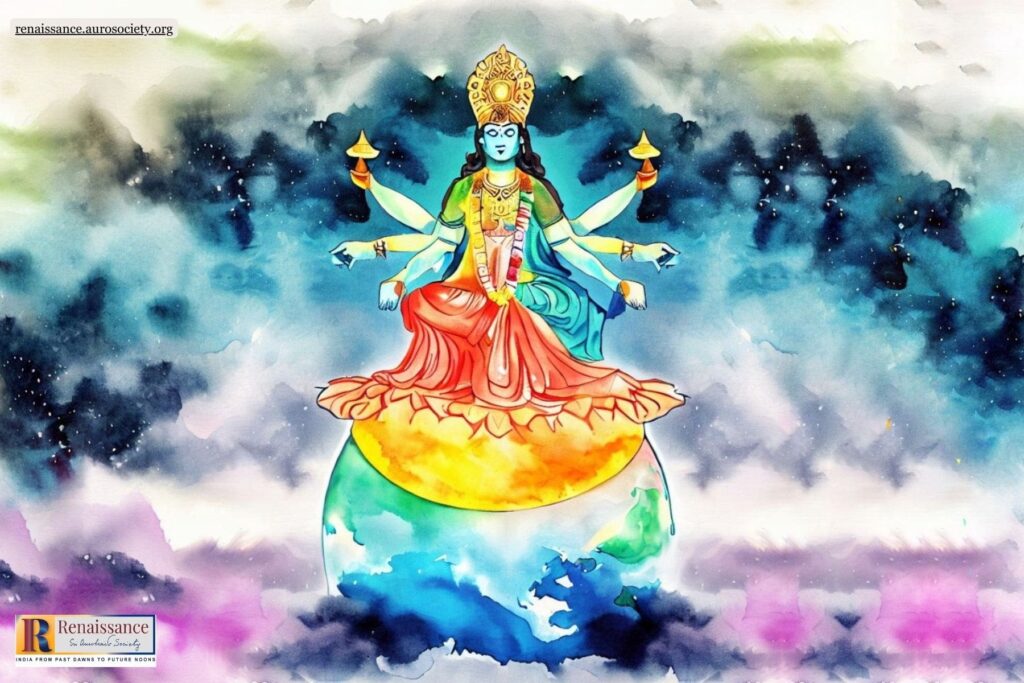
***
Sri Aurobindo’s Integral Yoga while synthesizing the Vedic-Vedantic and Tantric lines of spiritual quest and realization also transcends them both by bringing in the element of Transformation. In a letter addressed to a disciple, Sri Aurobindo wrote:
“Veda and Vedanta are one side of the one Truth; Tantra with its emphasis on Shakti is another. In [Integral] Yoga all sides of the Truth are taken up, not in the systematic forms given them formerly, but in their essence and carried to the fullest and highest significance…”
~ CWSA, Vol. 29, p. 459
Tantra, in simple words, is a worship of Shakti, power, or energy.
In traditional Vedanta, however, Shakti is generally seen as the power which helps us overcome the deceptions of active energy. But in the integral conception of existence, the Conscious Soul or Purusha is the Lord, and the Nature-Soul (Prakriti or Shakti in a higher sense) is his executive Energy.
“Purusha is of the nature of Sat, the being of conscious self-existence pure and infinite; Shakti or Prakriti is of the nature of Chit, — it is power of the Purusha’s self-conscious existence, pure and infinite. The relation of the two exists between the poles of rest and action.”
~ CWSA, Vol. 23, p. 43
While Integral Yoga has its own forms and processes of integrating the Vedantic and Tantric disciplines, some of the important aspects of the Tantric Yoga are fundamental to Integral Yoga. These include: the ascent of the consciousness, and also that nothing can be done except through a descent of the force of the Divine Mother, the Shakti.
The Mother in Integral Yoga
Opening to the Light and Force of the Divine Mother and Surrender to Her are the keys to the transformation that is the aim of Integral Yoga. Sri Aurobindo writes that the synthesis he presents in Integral Yoga “starts from the method of Vedanta to arrive at the aim of the Tantra.” (CWSA, Vol. 24, p. 612)
This implies that there need not be any ascetic denial of the world for an aspirant on the path of Integral Yoga. Rather, the aspirant is asked to face and overcome the pains and sorrows and all other challenges life and world offer through the play of Nature or Prakriti.
The emphasis is on transforming one’s lower nature that clings to worldliness and all the outer vicissitudes of the worldly play, while one’s higher nature continues to seek deeper knowledge and grow in devotion and love for the Divine. It is for achieving an inner harmony that Sri Aurobindo worked out a synthesis of the Vedantic yoga systems with Tantra as the instrument to organize an individual’s approach to yoga.
As Sri Aurobindo explains:
But the movement of Nature is twofold, higher and lower, or, as we may choose to term it, divine and undivine. The distinction exists indeed for practical purposes only; for there is nothing that is not divine, and in a larger view it is as meaningless, verbally, as the distinction between natural and supernatural, for all things that are are natural.
All things are in Nature and all things are in God. But, for practical purposes, there is a real distinction. The lower Nature, that which we know and are and must remain so long as the faith in us is not changed, acts through limitation and division, is of the nature of Ignorance and culminates in the life of the ego; but the higher Nature, that to which we aspire, acts by unification and transcendence of limitation, is of the nature of Knowledge and culminates in the life divine.
The passage from the lower to the higher is the aim of Yoga; and this passage may effect itself by the rejection of the lower and escape into the higher,—the ordinary view-point,—or by the transformation of the lower and its elevation to the higher Nature. It is this, rather, that must be the aim of an integral Yoga.
~ CWSA, Vol. 23, pp. 44-45
***
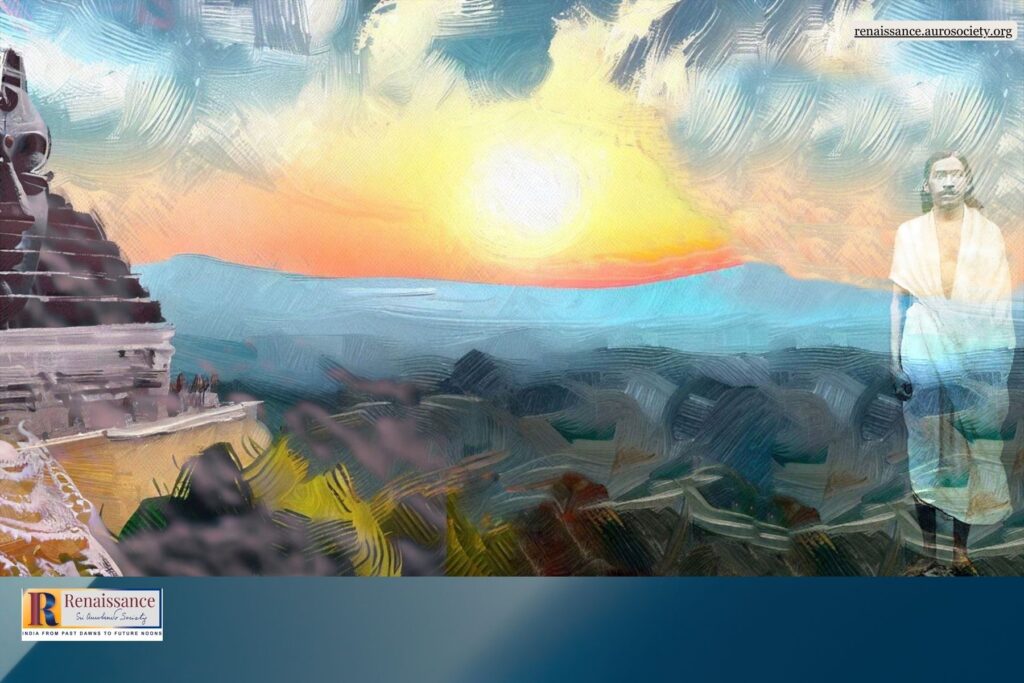
***
As per the Tantric approach to the Divine, there is nothing in Life which should be rejected because all is the creation of the Supreme Shakti. Even that which Vedantic scriptures enjoin upon all seekers to reject, the bhoga, need not be given up.
The idea is that after all the world is for the bhoga or enjoyment of the Ishwara or the Ishwari. And man at his highest represents an effective portion of Him or Her, and so must enjoy the bhoga, conscious of his part as the vehicle or centre of the Enjoyer. This bhoga-mārga, or left-handed path or Vāmamarga as it is called, later fell into disrepute and degeneracy.
But that need not detract from the sublime conception which is at the base of Tantric discipline, namely, the high standard of purity and sincerity that was expected of man if he was to discharge conscientiously his responsibility as a pure channel for the joy of bhoga or bhukti.
Tantric discipline, therefore, requires a tremendous labour of discipline and self-exceeding, in one’s own personal and inner, and the outer and collective life. It focuses on release of the very energies and forces of Prakriti, Nature, and their mastery through their purification and opening into the consciousness of the Divine Mother.
Worship of the Divine Mother
In many writings of Sri Aurobindo, we find deep insights into how one can grow in a conscious relation with the Divine Mother. This is the essential foundation of adoration of the Divine Mother. Given that Sri Aurobindo speaks of yoga as practical psychology and a systematic effort to evolve in consciousness, these practices are new inward-oriented forms for the essential spirit behind the more outward Shakti upāsana practices in the traditional Tantric sadhana.
During the month of September (25-29, 2023), I had an opportunity to attend and present a paper at the International Seminar on ‘Tantric Religion: Philosophy, Literature, Cults, Art, History and Continuities’ held at Pondicherry University. Organised by the Department of History, Pondicherry University in association with Indira Gandhi National Center for the Arts (IGNCA), Regional Chapter, Puducherry, and Indian Council of Historical Research, the seminar also included a special symposium on Tantra Yoga and Sri Aurobindo’s Integral Yoga.
I presented a paper at this symposium titled Worship of the Divine Mother in Integral Yoga.
Listen to the Lecture
Invoking Shakti: A Workshop for Children
As part of our work on this theme, we also curated and facilitated a 4-day workshop for children ages 3 to 19 of the Creative School, Bengaluru. Interested readers can learn more about this remarkable school in one of our Insightful Conversations when we interviewed the founders and principal.
The theme for the workshop, held from October 9-12, 2023, was – Invoking Shakti: The Divine Feminine in Indian Culture. The programme included a range of age-appropriate educational activities for the children, such as chanting, movement-based learning, fun with crafts, storytelling, cultural performances, interactive sessions, concentration games, exhibition on Nari Shakti, film discussions, celebration of Shakti, and more.
***
***
See photo albums HERE.
We also researched and curated a poster-exhibition on Nari Shakti, Woman an Indomitable Spirit. The exhibition content is inspired by Sri Aurobindo’s description of the Four Aspects of the Mother. It was put up on display on October 10, 2023 as part of the Invoking Shakti workshop. Read more about it HERE.
Offerings in the Divine Shakti Special Issue
For the Guiding Light feature, we highlight Sri Aurobindo’s detailed description from The Synthesis of Yoga of the different levels of consciousness through which we understand and experience the working of Shakti or Energy within and around us. Simply titled The Divine Shakti, the description is presented in two parts. Sri Aurobindo emphasizes that the perfection sought in the integral Yoga is not only to be one with the Shakti in her highest spiritual power and in her universal action, but to realise and possess her fullness in our individual being and nature.
In the Sunlit Path feature, we present a selection of letters of Sri Aurobindo where he describes the working of the Mother’s Force in Integral Yoga and how we must open to receive it. These letters were written in responses to the questions some disciples had asked based on the descriptions of the Divine Mother given in the book ‘The Mother‘.
From our archives:
The Mahashakti and Her Powers
In the feature titled The Dance of Shiva and Shakti, Narendra Murty reminds us that long before the advent of Quantum Physics, the sages of Bhārat had declared that behind all the names and forms of this universe is One Energy, whom they called Shakti.
We are delighted to feature a soulful account of the first Lakshmi Puja at Sri Aurobindo Ashram by Priti Dasgupta. Excerpted from her book titled Moments Eternal the description below is intertwined with her childhood memories of celebrating Lakshmi Puja in Bengal, making the narrative richer and more delightful for the reader.
In several of Sri Aurobindo’s writings, especially in his poetry, we find a very high and deeply inspiring portrayal of the essence of womanhood and the Shakti that she is. In the current issue we feature an article titled Woman in Sri Aurobindo’s Poetry highlighting some of these portrayals. This was first published in 1966 in the Ashram journal, Mother India. The author, Romen, had prepared this article for a talk that he delivered at the Second Annual Conference of the New Age Association on 9th September 1965. This association was started with the blessings of the Mother and held quarterly seminars and annual conferences.
***
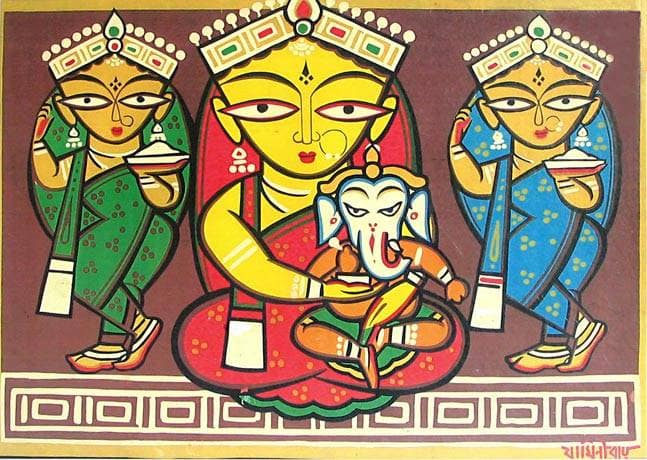
***
The issue also features a video prepared by Suhas Mehra, inspired by Sri Aurobindo’s sonnet The Hill-top Temple which describes his experience at a Devi temple near Pune, in 1902. Gayatri Majumdar’s poem titled Waves and frequencies comes from her meditation on Maa Durga and speaks of a light within. Finding that light within is an inner invocation of the Shakti that is the source of everything, is behind and within all and everything, which moves everything including all that may appear chaotic or destructive on the surface.
In the second story in the ongoing series, Upanishads Elucidated Lopa Mukherjee takes us to Maitreyee’s swayamvar. Presented in two parts, the story The Light of Lights speaks of the journey undertaken by Maitreyee and her companions. Read to learn more about the light which they seek and where they find it.
As always, we offer this work at the lotus feet of Sri Aurobindo and the Mother.
In gratitude,
Beloo Mehra (for Renaissance Editorial Team)
~ Graphic Design: Suhas Mehra & Beloo Mehra
~ Video of Worship of the Divine Mother in Integral Yoga: Satya

